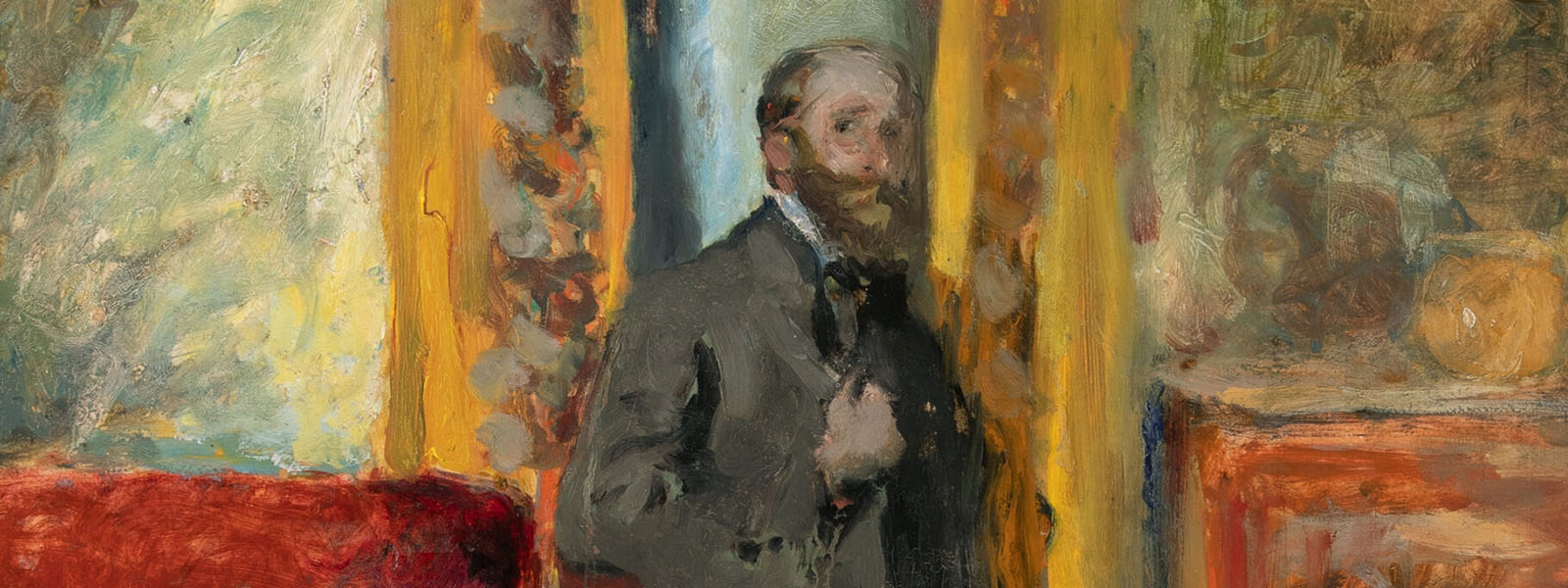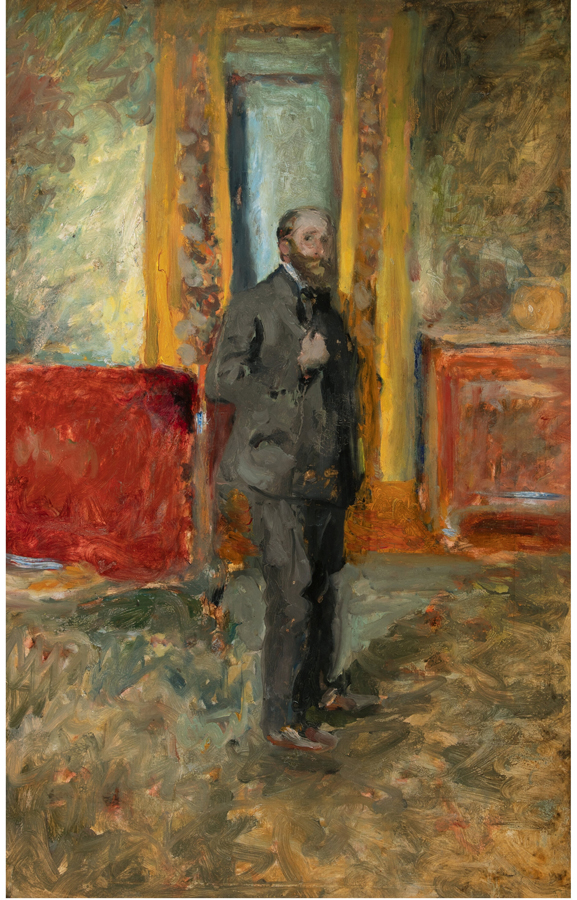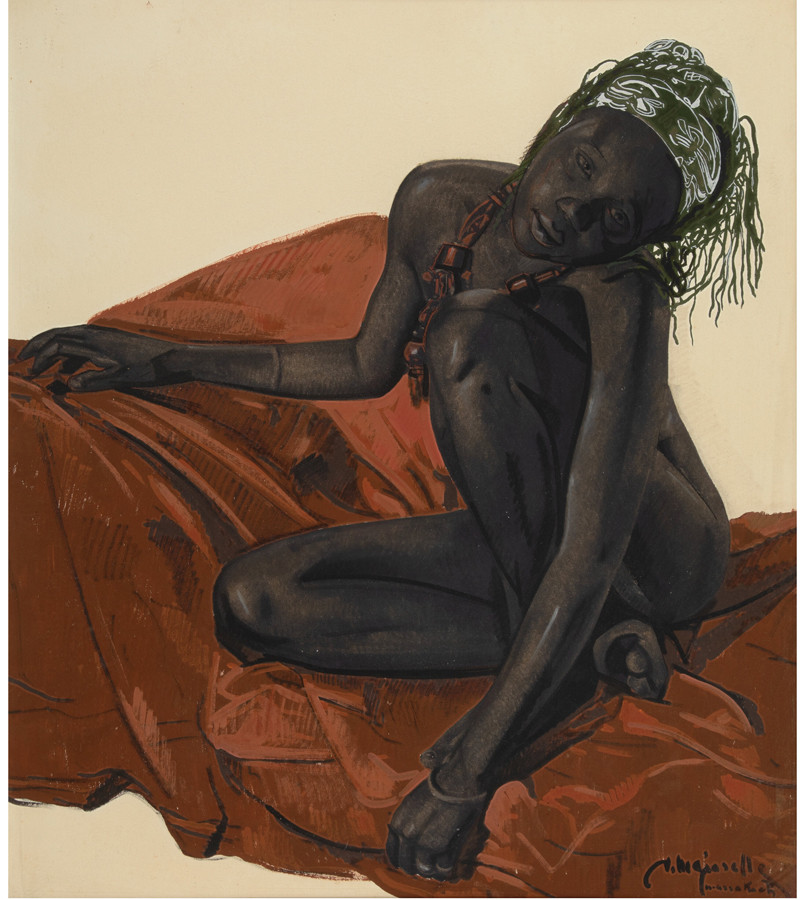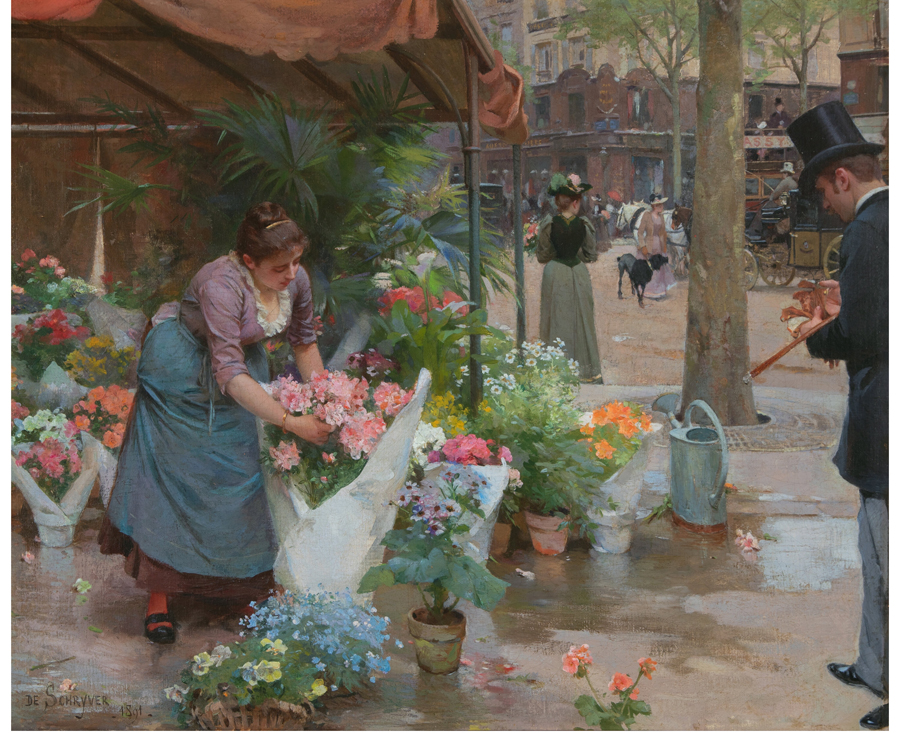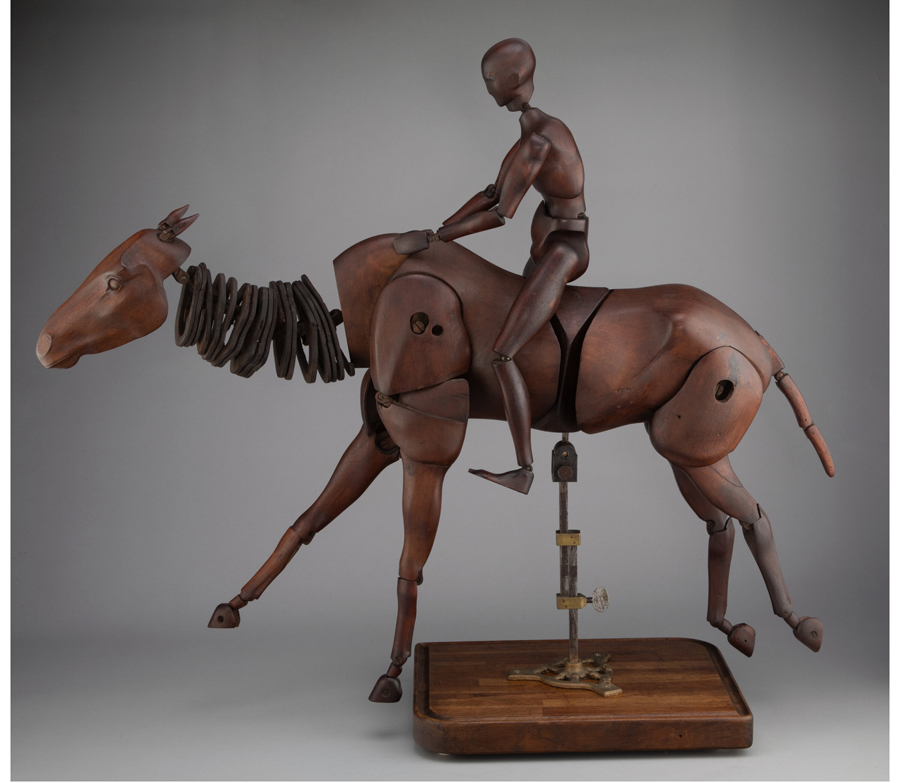THE ARTIST BECOMES THE SUBJECT IN AN INTIMATE SELF-PORTRAIT BY THE INTROSPECTIVE FRENCH MASTER
By Christina Rees
“I don’t make portraits,” Édouard Vuillard famously said. “I paint people in their homes.” The statement may seem tame today, but at the time the French artist made it – the turn of the last century – he was in a sense asking the general public to reconsider the evolving role and impact of art itself. It is a heady conceptual declaration made about a traditional medium that people thought they had already figured out. It’s difficult to overstate just how radical the work of French painters at the end of the 19th century and early part of the 20th century looked to the rest of Europe and the world, and just how responsible they are for the birth of modern painting and even the conceptual underpinnings of contemporary art.
Édouard Vuillard ‘Full-length self-portrait,’ circa 1900. Oil on board laid on canvas. 30-1/4 x 19-1/2 inches (76.8 x 49.5 cm).
Institutions and collectors continue to pursue French works that came from that rich and extended era of innovation and from the artists who set out on that novel trajectory and opened up our definition of painting. On June 4 Heritage celebrates a handful of French greats in its Fine European Art Signature® Auction, and an extraordinary and intimate painting by Édouard Vuillard is among the works on offer, along with charismatic paintings by Lucien Pissarro, Jean-Baptiste-Camille Corot, Jacques Majorelle and more. In a tightly curated auction teeming with European greats, this set of notable French paintings leads the event with a nod to the legacies of artists the academy largely rejected at first and who nonetheless went on to become household names.
June 4, 2024
Online: HA.com/8171
INQUIRIES
Marianne Berardi
214.409.1506
MarianneB@HA.com
The painting by Vuillard, his Full-length self-portrait, circa 1900, comes to auction from the Estate of Mrs. Henry Ford II. It is a gorgeous work that synthesizes so much of the artist’s concerns and disposition. “Vuillard was a notoriously introspective artist who felt more at home painting what was often considered during his lifetime as the realm of women – domestic interiors where women sewed, arranged flowers, watched the children,” says Dr. Marianne Berardi, Heritage’s Director of European Art. “I love this self-portrait because he doesn’t mask his own queasiness about being the focus of attention and, in fact, paints himself as though he is merging with and into the room in which he stands. Vuillard loved patterns and textures and usually allowed figure and ground to fuse in his paintings.”
In their catalogue raisonne on the artist, Vuillard: The Inexhaustible Glance, Antoine Salomon and Guy Cogeval write about this painting: “Aside from a youthful watercolor and a handful of caricatures of himself, this is the only full-length self-portrait in Vuillard’s oeuvre … In a contemporaneous drawing the artist depicts himself as a dandy reflected in a wardrobe mirror. The surroundings hinted at in the sketch seem to confirm those of the canvas. In both works Vuillard, who is known to have exasperated his female admirers by going about in a threadbare jacket and trousers all but worn through at the knees, has some fun at his own expense.”
Indeed this painting by Vuillard seems to do several things at once, and very effectively: It shows a particularly deft and sophisticated approach to the paint handling and decision-making we associate with masters of the era – including their ease in depicting light, texture, and facial and body expression – as well as Vuillard’s playful push-pull of the subject’s relationship to the viewer and his physical relationship with the surrounding space. Not long ago Alison Smith, chief curator at London’s National Portrait Gallery, said, “A self-portrait is more accurate than a portrait by another artist. The level of self-scrutiny is more intense.” And the art historian Philip Mould has said, “In the case of professional portraitists … [a self-portrait] allowed them to be expressive in a way that was inappropriate in formal portraiture. Collectors often perceive them as having a higher artistic validity than commissioned portraits – as psychological expressions of the artist’s soul.” If this is a painting of Vuillard’s soul, he appears to make for very good company.
Lucien Pissarro ‘Vue de Bormes,’ 1926. Oil on canvas. 21-1/2 x 25-3/4 inches (54.6 x 65.4 cm).
Another French highlight in the auction is a beguiling 1926 landscape by Lucien Pissarro titled Vue de Bormes. “This beautiful scene of Bormes, a hill town on the French Riviera, is one of my favorites in the auction,” Berardi says. “It showcases Pissarro’s remarkable gifts as a colorist, evoking the dry heat of the climate through the peculiar dusty hues of his palette.” This work by the eldest of Impressionist Camille Pissarro’s seven children was painted from a low vantage point at the bottom of the hill, affording a unique perspective of the houses that seem to sprout from the ruddy soil and grow toward the friendly blue sky. The palette and the subject of the southern French mountains have strong associations with the work of Paul Cézanne. Bormes is featured in a few other paintings by Pissarro during this period, including his Quartier St. Esprit, Bormes, also of 1926, in the collection of the Museum of Fine Arts, Springfield, Massachusetts.
Jacques Majorelle ‘Nu accroupi sur une couverture,’ circa 1933-1934. Gouache, pastel and metallic powders on heavy paper. 24-1/2 x 20-3/4 inches (62.2 x 52.7 cm) (sight).
Also on offer is an extraordinary circa 1933 painting by French artist Jacques Majorelle titled Nu accroupi sur une couverture. Majorelle rose to prominence by capturing the unique beauty and culture of Morocco during the early 20th century. “Although Majorelle’s nude is a masterful figure study, it goes far beyond that into the realm of portraiture,” Berardi says. “And like most captivating portraits, the sitter’s expression in this intimate likeness seems to be several different things at once. This young woman looks dreamy, sleepy, somewhat sad and also full of longing. Majorelle developed a stunning technique for painting skin with natural radiance, which he used here to exquisite effect, mixing fine gold, silver and copper powders with gouache to convey highlights and reflections.” The graphic and illustrative qualities of the portrait, along with its strong and declarative negative space, land it solidly in the realm of true Modernism and a direction that Western artists would continue to explore and develop over the coming decades.
Jean-Baptiste-Camille Corot ‘Ruisseau abrité par les arbres,’ circa 1850. Oil on canvas. 9-3/4 x 15-1/4 inches (24.8 x 38.7 cm).
A circa 1850 painting by Jean-Baptiste-Camille Corot titled Ruisseau abrité par les arbres is an auction highlight, too, properly moody with late afternoon light and depicting a stream sheltered by trees with a lone cow grazing in the distance. It anticipates the moves of the Impressionists and is joined in this event by a later Impressionist work depicting another stream sheltered by trees titled Paysage by Henri Baptiste Lebasque. Other French painting highlights in the auction include an oil on canvas by Post-Impressionist painter Ferdinand du Puigaudeau titled Clair de lune sur Kervaudu. It depicts the moody late-15th-century manor in le Croisic, Brittany, that became the home of the artist from 1907 until his death in 1930.
Louis Marie de Schryver ‘Le marché aux fleurs de la Madeleine,’ 1891. Oil on canvas. 21-1/2 x 25-3/4 inches (54.6 x 65.4 cm).
A painting by Belle Epoque favorite Louis Marie de Schryver is another wonderful work featured in the auction. De Schryver made his debut at the Salon in 1876 at the astonishingly young age of 13 and won a bronze medal at the 1879 World’s Fair in Sydney before taking on more ambitious compositions. Le marché aux fleurs de la Madeleine, from 1891, was painted in the artist’s prime and epitomizes the elements so central to his work – specifically the bountiful florals and the artist’s characteristic presentation of both the leisure and working classes on the streets of Paris. Another painter who got an early start, François-Alfred Delobbe, is represented in the auction by his painting Young mother and her child. Delobbe was admitted to the École des Beaux-Arts at the age of 16, and after initial training he entered the studio of William-Adolphe Bouguereau, whose style and subject matter had a profound effect on the young artist. Although urged by Bouguereau to focus on mythological subjects and portraiture, Delobbe soon gravitated to genre subjects, which may have also been the result of his close friendship with classmate Alfred Guillou.
A rare articulated walnut maquette of a horse and rider, 19th century. Wood, leather and metal. 30-1/2 x 31 x 10-1/2 inches (77.5 x 78.7 x 26.7 cm).
And what of the tools and inspirations that drove these painters’ visions? A fascinating entry in the auction is this rare 19th-century articulated maquette of a horse and rider made of walnut, leather and metals. The top makers of these forms, located in Paris, produced the most lifelike examples; these vital tools allowed artists to manipulate and study the form to compose the most realistic scenes and portraits. The figures of horse and rider, carved from walnut and other fruit woods, were offered with adjustable iron or brass joints to facilitate movement, connecting to each other and the base via a series of small metal dowels. The neck of the horse, one of the most fluid areas and a major focal point, employed leather bands for more precise articulation.
Via the abovementioned lots and many more, the June 4 auction promises an intriguing foray into the rich history of French and European painting traditions. “In addition to its impressive panorama of French paintings and drawings from the 18th through 20th centuries, the auction includes a lovely selection of Italian, Flemish, Dutch and British pictures and fine prints by Rembrandt,” Berardi says.
 CHRISTINA REES is a staff writer at Intelligent Collector.
CHRISTINA REES is a staff writer at Intelligent Collector.

